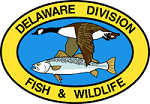Search Level: Standard
Search Term(s): Viola fimbriatula (1 record found)
Search Term(s): Viola fimbriatula (1 record found)
VIOLACEAE
Violet Family
Violet Family
Viola fimbriatula (northern downy violet)
[ + ]
Synonym
Viola sagittata Ait. var. ovata (Nutt.) Torr. & Gray
Carex Section
--
Meaning of Scientific Name
Viola: classical name for the genus; fimbriatula: somewhat fringed
Native Plant
Yes
Life Form
Perennial Herb
Phenology (Flowering Period)
April-May
Physiographic Province
☑ Piedmont
☑ Coastal Plain
County Distribution
☑ New Castle
☑ Kent
☑ Sussex
Habitat
Thin woodlands, edges, and meadows on well-drained soils
State Status
Uncertain
Piedmont Status
Uncertain
Coastal Plain Status
Uncertain
Global Rank
--
Federal Status
--
Geographic Affinity
Northern
Species at Limit of Distribution
☐ Northern
☐ Southern
North American Distribution (Non-indigenous Species)
--
Coefficient of Conservatism
5
Invasive
--
Invasive Watchlist
--
Global Origin (Non-native Species)
--
Wildlife Values
The nectar and/or pollen of the flowers attract honeybees, bumblebees, long-horned bees, mason bees, ants, bee flies, butterflies, and skippers. The foliage is eaten by the larvae of various butterflies, and miscellaneous moths. Nutrient rich elaiosomes on seeds are eaten by ants, as a result, ants help to disperse seed through the forest.
Wetland Indicator Status
FAC-
Medicinal Properties
--
ID Notes
Blades of V. fimbriatula are densely pubescent and basal teeth are undeveloped or with just a few coarse teeth.
Additional Info
Species is closely related to V. sagittata.
Habitats in which this plant occurs
Early Successional Herbaceous Upland Habitats (Piedmont Native Grassland)Serpentine Grasslands
Photos
[show|hide]
(click on thumbnail for larger view)


